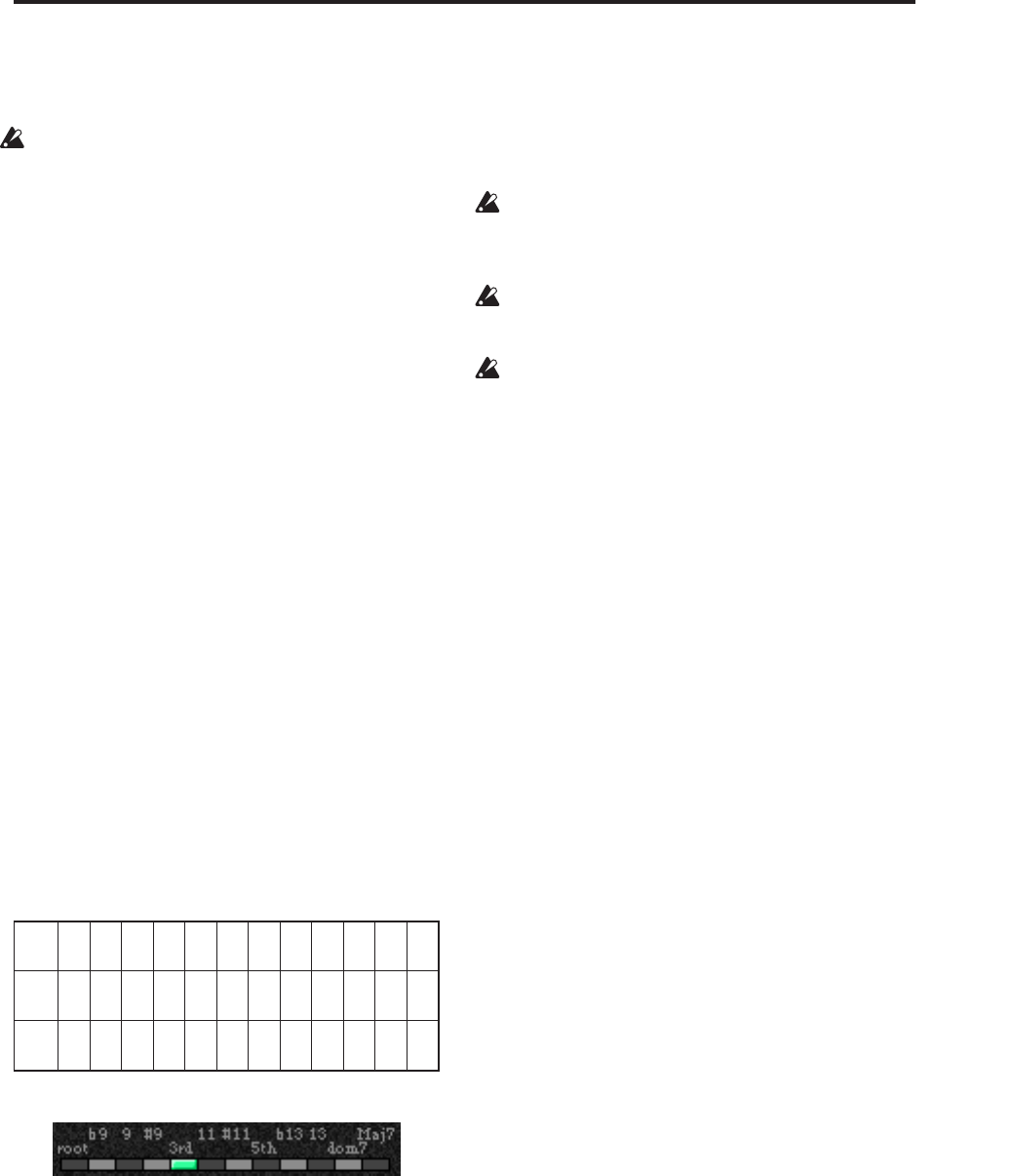
Note Series Group Parameters
903
key of E. In the above example, playing a C would
result in a E diatonic scale, playing a D results in an F#
minor scale (F# Dorian mode) and so on.
Not available if “GE Type” = 1: Generated-Gated.
For more information, see “GE Type” on page 897.
Filter Template [0…77]
Allows the entire Filter Steps grid (☞
<HelveticaM>About Filter Steps) to be changed to one
of 78 different settings. Template 0 is all steps off (no
steps filtered), while Template 77 is all steps on except
the root (only the root is allowed in the Note Series). As
the Templates proceed from 0 to 78, more and more
steps are filtered out, in different combinations.
Filter Temp + Restore [–1…77]
Operates the same as “Filter Template” (above), with
the difference that when the GE Real-Time Parameter
is set to the minimum value specified by the GE Real-
Time Parameters page range parameters (see “MIN
(Minimum Value)” on page 111), the internal setting of
the GE for the Filter Steps grid will be restored. In
other words, you can have a certain Filter Steps setting
already set up on the grid. Using “Filter Temp +
Restore” as a GE Real-Time Parameter, you specify a
range where the Min value restores the internal
settings, and the rest of the range selects Templates,
replacing the internal settings. So if the “Min Value”
was 5 and the “Max Value” was 10, choosing 5 would
restore the internal settings, and 6 through 10 would
select the corresponding Filter Steps Template. You can
use this to keep the internal settings of the GE, while
still allowing a wide variety of Filter Templates to be
substituted. In this case, the available range is -1–77.
You can assign the full range of all 77 Templates, with
indicating “Restore,” or only a portion of the range,
and still have the ability to restore the original internal
settings.
About Filter Steps
A 12 step grid corresponds to the scale tones with
regard to a current “key,” which is determined by
Chord Analysis of the input source material. For
example, if the key is determined to be C, then the
steps 1 through 12 correspond to C, C#, D to B; if the
key is determined to be “E,” then steps 1 through 12
correspond to E, F, F# to D#. After the Note Series is
created, notes belonging to the chosen steps are
removed, thus “filtering” them out. For example, if {C,
E, G, B} was the input material, CMaj7 would be the
analyzed chord; if step #4 “3rd” was selected on the
grid (as shown in the above diagram), all occurrences
of E would be removed from the Note Series. Useful
for creating complex grooves where several modules
are all supplied with the same source material, where
for example you might not want the bass line to play
the 3rd even if it is supplied from the keyboard, might
want to remove all chance of 7ths from a comping
guitar part, etc.
Selecting all steps to be filtered will result in a single
note in the Note Series, determined by the settings
of other parameters such as “Input Sort,”
“Inversion,” etc.
To “fix” the resulting filtered collection of notes with
regards to a specific key, use “Filter Fixed”
(described above).
Not available if “GE Type” (☞p.897) = 1:
Generated-Gated.
Step #1 #2 #3 #4 #5 #6 #7 #8 #9
#1
0
#1
1
#1
2
Key:
C
C
C
#
D
D
#
E F F# G
G
#
A
A
#
B
Key:
E
E F F# G
G
#
A
A
#
BC
C
#
D
D
#


















